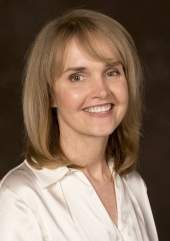 Annette Wellings is a Pilates instructor who suffers from major scoliosis. She began exploring different ways of keeping her body flexible and healthy whilst working as a linguist and artist in Australia and subsequently, she retrained in rehabilitation Pilates.
Annette Wellings is a Pilates instructor who suffers from major scoliosis. She began exploring different ways of keeping her body flexible and healthy whilst working as a linguist and artist in Australia and subsequently, she retrained in rehabilitation Pilates.
She is the co-author of Curves, Twists and Bends: A Practical Guide to Pilates for Scoliosis with Alan Herdman, the leading practitioner of Pilates in the UK since introducing it there in 1970.
How did you first find out about Pilates?
While working as a linguist and an artist in Australia and Fiji, I became increasingly aware of my body becoming more hunched and painful with scoliosis. By the time I was about 35, my spine was rigid and my torso was becoming increasingly twisted. I realised that I needed to do something and explore options, instead of passively sitting by and lamenting the degeneration of the spine. I began exploring different ways of keeping my body flexible and healthy, and I discovered Pilates.
How easy is Pilates to learn for the complete beginner?
The beauty of Pilates is its simplicity and versatility. Essentially it is a gentle form of exercise that is constantly adjusted and moulded to suit the particular needs of the individual. For the complete beginner, it is important to go to a good qualified teacher who understands your condition. Pilates is a subtle process and, like many effective exercise programs, it requires time and focus in developing a mind-body awareness. Rather than instant gratification or a quick-fix, it bears gradual profound benefits over time.
How can Pilates complement traditional rehabilitation medicine?
Whether individuals have opted for surgery or not, it is vital that people with scoliosis (particularly severe curvatures) keep the spine and body as healthy, supple and lengthened as possible. Pilates provides gentle exercises that can help improve flexibility, posture and alignment, and lengthening.
Pilates can be particularly useful for scoliosis, by teaching how to move and engage separate muscle groups. This can help tease out asymmetrical patterns of muscle use, encouraging the strengthening of weak underdeveloped muscles, and breaking down the dominant bossy muscles which develop on one side of the torso.
While surgery focuses on straightening out the spinal curvature, it is important to highlight that Pilates exercises are not designed to restructure the spine. Their purpose is to encourage flexibility and length, and enable the body and spine to be as healthy and supple as possible. As such, Pilates is suited to all people with scoliosis. The basic exercise movements can then be modified and developed more precisely to suit the particular shape of an individual curvature.
Your co-author, Alan Herdman, suggests that the message of Pilates is ‘Quality not Quantity’. How often would a typical scoliosis sufferer need to practice Pilates to feel the benefit?
Alan is right. Pilates requires you to be mindful and put time and effort into any program, particularly if you’ve got scoliosis. To get full effect and benefits, two to three times a week is a great start. Including it as part of your everyday lifestyle is ideal. There is no quick fix for scoliosis, and it’s good to put in consistent time and focus over the long term, learning and listening to your body.
In the book you look at different strategies for living with scoliosis. As a sufferer yourself, what is the best advice you can give to other people living with this condition?
First, accept your scoliosis and recognize that it makes you unique. It is a symbol of your individuality. Get information about your curvature, so that you understand and are aware of what your scoliosis involves (e.g. location, size and type of curve). You should explore options available for treating your scoliosis and keeping your body strong, lengthened and flexible. It’s important to make yourself a health care plan for life, including adequate rest, a healthy diet, and a gentle regular exercise routine to keep the body as supple and healthy as possible. Think length. It’s wise to avoid movements and circumstances which jolt or compress the spine.
In short, let go and listen to your body. Accept, observe and explore your condition with curiosity.
Copyright © Singing Dragon 2009